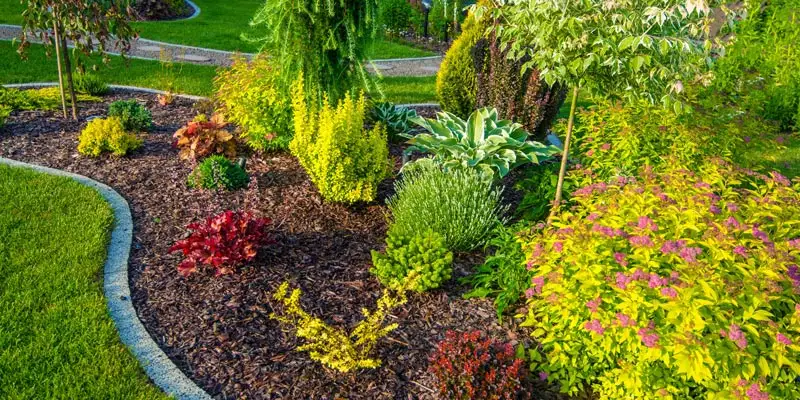The Best Strategy To Use For Landscape Design
Table of ContentsThe 3-Minute Rule for Landscape DesignOur Landscape Design PDFsLandscape Design - QuestionsOur Landscape Design DiariesLandscape Design Fundamentals Explained
Official style theme. Credit: Gail Hansen, UF/IFAS The lawn is an extension of the home where a range of tasks happen. A backyard can usually be split right into 3 areas: public (the front yard), personal (the backyard), and service (normally the side lawn). The area of activity areas depends largely on the kind of area, the size of space needed, the kind of task, and the wanted proximity to various other tasks and structures.The outside wall of your house typically acts as the first wall surface or beginning point of an outdoor area. Inappropriate uses should be divided, and relevant tasks, such as cooking and dining, must be assembled to make the backyard a lot more effective and pleasurable. When utilizing hardscape to create rooms, make use of building and construction product comparable to that utilized in the home for connection from your house right into the garden.
Linked spaces. Credit Score: Gail Hansen, UF/IFAS Making use of comparable hardscape features and duplicating plants draws the eye around the garden. Important points along the road can be emphasized with growings or features that draw attention and motivate activity in a certain direction. Moving along the path takes an individual from one location to the next and permits the user to have a range of experiences.
Landscape Design for Beginners

For mental convenience plants are utilized as physical or implied barriers for privacy and safety. Physical barriers obstruct both the view and access to an area and include fencings, wall surfaces and plant bushes. Implied barriers, typically low expanding plants, block gain access to however not the sight (Number 9). Various other functions of plants consist of cleansing the air, avoiding erosion and soil loss, keeping wetness in the soil, and returning organic matter to the soil.
Physical and implied barriers. Credit History: Gail Hansen, UF/IFAS For these factors, the sorts of plants to be used (such as trees, bushes, or groundcovers) must be chosen in the very early stages of preparation (Landscape Design). Plant types are chosen for their practical capacities so that their future function and needed area can be taken into consideration at the very same time

Some Known Questions About Landscape Design.
Each plant mass is in front of, behind, or next to, another mass. Credit: Gail Hansen, UF/IFAS Repeating plants within a mass and duplicating masses with comparable plants connects the garden with each other. The individual plant qualities should be considered to successfully layer and mass plants.
All plant structures start with the main structure plants, the huge, mostly evergreen background plants-such as the trees and large shrubs. These plants separate or enframe areas, regulate the dimension of the room, and offer the starting factor for picking the suitable features of the second layer, midground plants, for massing and infill.
Important points in the yard ought to be highlighted by the usage of one-of-a-kind plants, unique frameworks, or garden accessories. Marking thresholds or entries to spaces can be performed with gates, arbors, and actions, or with the use of unique and i loved this vivid plants. The form and/or design theme of the garden will often aid determine the essential factors and just how they ought to be highlighted.
Other vital areas in the lawn are focal points, which is made use of to aesthetically organize a designed area. The type of centerpiece usually depends on the checking out point of view. Various perspectives or perspectives can reveal different structures in the landscape that might need a selection of centerpieces. Contrasting texture, shape, size and color will certainly capture and hold the eye.
Landscape Design - An Overview

Figure 13. Plant forms. Credit: Gail Hansen, UF/IFAS After type, appearance is the next leading function of a plant; coarse, tool and fine textures can be used for comparison and emphasis in the landscape. Type and appearance both trump shade in the garden for the majority of the year. However, throughout specific seasons, color will be the most recognizable quality of the yard.
The pleasant aroma of plants, the noise of wind in the trees, the sound and appearance of water, and the shades and structures of sculptures, pots and garden furniture all contribute to the experience of the garden. One detail that is commonly forgotten is the impact of light on the aesthetics of the plants.

The Ultimate Guide To Landscape Design
It is essential to understand the ultimate fully grown dimension of plants so they can be placed in the right area and spaced correctly when they are installed. Offering plants space to grow is an obstacle since the common fully grown size is typically based upon optimal expanding conditions and the ecological conditions of a site might cause a plant to expand larger or remain smaller.